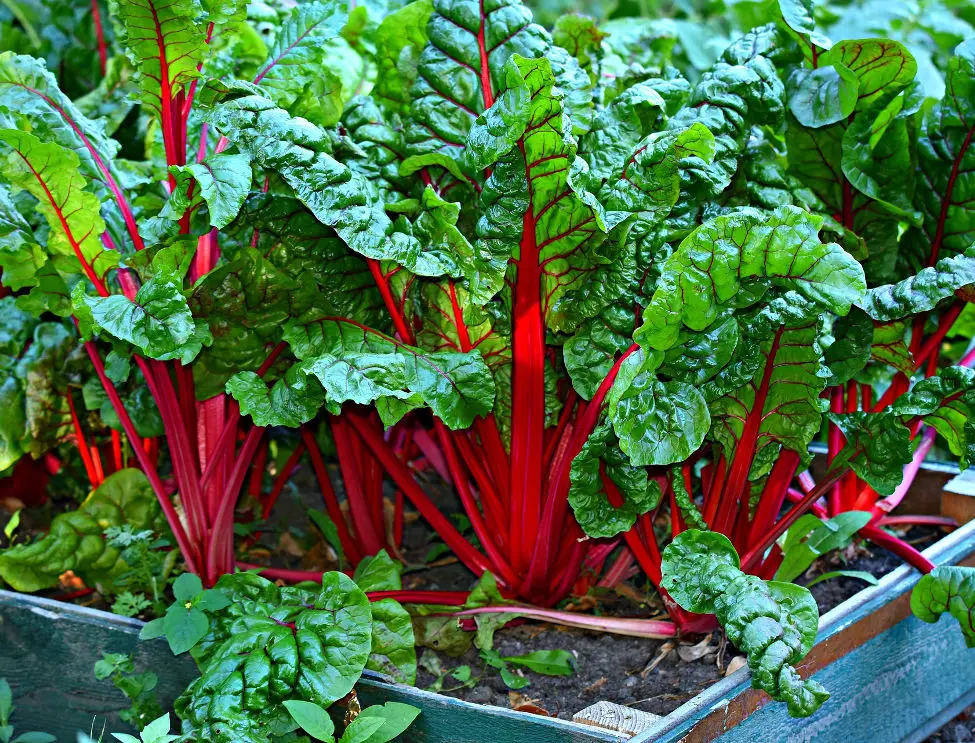Swiss chard (or Silverbeet), with its vibrant colours and versatile taste, is a wonderful addition to any container garden. Whether you have a balcony, patio, or limited space, this guide will walk you through the delightful process of cultivating Swiss chard in a container. We’ll explore the basic needs, growing techniques, problem-solving strategies, harvesting and storage tips, and conclude with the satisfaction of a successful container garden filled with nutritious Swiss chard.
Basic Needs: Setting the Stage for Swiss Chard Success
Container Selection and Size
The foundation of growing Swiss chard in a container begins with choosing the right pot. Opt for a container that is at least 30 cm deep with good drainage holes. The size of the container will depend on how many Swiss chard plants you intend to grow. Larger containers provide more space for the roots to thrive.
Soil and Fertilizer
Create a nutrient-rich environment by using a well-draining potting mix. Swiss chard prefers slightly acidic to neutral soil. Enhance the soil with organic matter or compost to provide the necessary nutrients. Fertilize the plants with a balanced, all-purpose fertilizer, especially if your potting mix doesn’t contain added nutrients.
Sunlight Exposure
Swiss chard thrives in full sunlight, but it can tolerate partial shade. Choose a sunny spot for your container, ensuring the plants receive at least 4-6 hours of sunlight per day. If you’re growing Swiss chard indoors, place the container near a south-facing window to maximize sunlight exposure.
Growing Techniques: Nurturing Swiss Chard from Seed to Leafy Bounty
Planting Swiss Chard Seeds
Begin the growing process by sowing Swiss chard seeds directly into the container or transplanting seedlings from a nursery. Plant the seeds about 1cm deep in well-moistened soil, spacing them according to the recommended distance on the seed packet. Transplant seedlings when they have a few true leaves.
Watering Strategies
Keep the soil consistently moist to ensure optimal growth. Water the plants at the base to prevent wetting the leaves, which could lead to fungal diseases. Swiss chard appreciates regular watering, especially during warmer periods. Mulching around the plants helps retain soil moisture.
Thinning and Spacing
Once the Swiss chard seedlings have established themselves, thin them to maintain proper spacing. This ensures adequate airflow, reducing the risk of diseases. Proper spacing also allows each plant to receive sufficient nutrients and sunlight.
Problem Solving: Addressing Common Challenges in Swiss Chard Cultivation
Pest Management
Swiss chard is relatively resistant to pests, but occasional visitors like aphids or caterpillars may appear. Use insecticidal soap or neem oil for organic pest control. Regularly inspect the undersides of leaves where pests often hide.
Leaf Discoloration or Curling
Discoloration or curling of Swiss chard leaves may indicate nutrient deficiencies or inconsistent watering. Fertilize the plants with a balanced fertilizer, and ensure they receive adequate moisture without becoming waterlogged.
Bolting and Flowering
Swiss chard may bolt, or produce flowers prematurely, in response to heat stress or age. To prevent bolting, plant Swiss chard in cooler seasons or provide shade during hot periods. Harvest regularly to encourage leafy growth rather than flowering.
Harvesting and Storage: Savoring the Leafy Richness of Swiss Chard
Harvesting Techniques
Harvest Swiss chard when the leaves are young and tender. Use clean scissors or shears to cut the outer leaves, leaving the inner leaves to continue growing. Harvesting from the outer leaves promotes continuous growth, ensuring a fresh supply. Regular harvesting also prevents the plant from becoming top-heavy.
Storing Fresh Swiss Chard
Store freshly harvested Swiss chard in the refrigerator. To extend shelf life, wrap the leaves in a damp paper towel and place them in a plastic bag. Alternatively, store the leaves in a container with a lid.
Tips: Enhancing Your Swiss Chard-Growing Experience
Succession Planting
Maximize your Swiss chard harvest by practising succession planting. Sow new seeds or transplant seedlings every few weeks to ensure a continuous supply of fresh leaves. This approach also helps manage space and provides a longer harvesting window.
Companion Planting
Plant Swiss chard alongside companion plants like radishes or carrots to maximize space and enhance growth. Companion planting can also help deter pests and promote a healthier garden ecosystem.
Vertical Gardening Techniques
Consider incorporating vertical gardening techniques to make the most of your limited space. Trellises or vertical planters can support Swiss chard while adding visual interest to your container garden.
A Container Garden Brimming with Swiss Chard Splendor
Growing Swiss chard in a container is not just about cultivating leafy greens; it’s about creating a mini-garden filled with nutritious richness. By understanding the basic needs, implementing smart growing techniques, addressing challenges effectively, and incorporating tips for success, you’re on your way to enjoying a continuous supply of homegrown Swiss chard. Embrace the satisfaction of nurturing your container garden and relish the flavours of freshly harvested Swiss chard right at your doorstep.
